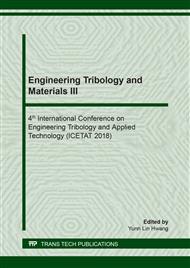p.1
p.9
p.15
p.21
p.27
p.33
p.41
p.53
Tool Path and Sheet Thickness Distribution of Axisymmetric Cup in Single Point Incremental Forming
Abstract:
This study involved planning different tool paths for an axisymmetric cup to explore the forming characteristics of the single point incremental forming (SPIF) process. In addition, this study developed a gradient theory to compute the inclined angle between the tangential and horizontal directions of the cup formed using single point incremental forming. The sheet thickness distribution of the cup was also calculated. To verify the theory, circle arc cups were formed by CNC machining using different tool paths. It was found that the cup formed using the spiral evolutional snail-line tool path produced a better surface than that formed using the equal height evolutional tool path. The sheet thicknesses of circle arc cups obtained by the experiment and using the cosine law were compared. A larger deviation was noted in the initial portion of the cup, whereas a smaller deviation was found in the other portion. This study also adopted a dual-conical cup to investigate the relationship between thickness and the initial inclined angle at the initial portion. It was found that a larger initial inclined angle led to good coincidence between the experimental and theoretical sheet thicknesses.
Info:
Periodical:
Pages:
1-7
Citation:
Online since:
September 2019
Authors:
Price:
Сopyright:
© 2019 Trans Tech Publications Ltd. All Rights Reserved
Share:
Citation:


